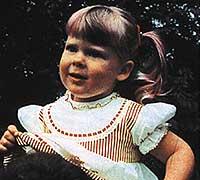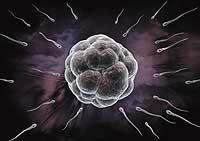Do you remember Louise Brown?

The child's first crying was heard before midnight. The delivery room was full of people: besides the usual employees, there were several researchers and a camera. No one made irrintzis of joy, but most breathed quieter, safer.
It was July 25, 1978, when little Louise Brown was born in Oldham, England. The child had a weight of two kilos and six hundred grams, and everything indicates that it was normal.
It seems like yes, but the rest was not so normal, since it was born in a program and, therefore, it was called probeta-child in the media of that time. More than one thought the child would have some error, but time showed that Louise was like the rest of children.
The hope of many couples
This birth was a source of hope for many couples who could not have children. In fact, the assisted fertilisation technique until then was not successful and there were very few couples who came to ask for help from the researchers. However, the success of the Brown family encouraged people to follow the same path.

The researchers found that it was a good opportunity to continue improving in vitro fertilisation, but still few women managed to get pregnant with this technique and most lost the child in the first twelve weeks. However, as the research progressed, the technique improved considerably and, at present, more than a million people come from a fecundated oculus in a test tube.
But, in addition to hope, the birth of the Louise also caused the friction. The debate was especially ethical. Did man have the right to intervene in fertilization? That was the question in the air. The Catholic church, for example, made its position clear, condemned in vitro fertilisation.
Still in pure state
That debate has come to this day. In many cases the problem is found in the woman's fallopian tubes, since they are closed or obstructed, a problem that Mrs. Brown, Louis' mother, had. In these cases, the woman produces the egg, but cannot go down to the tube, so the sperm can't get fertilized. In these cases, the most appropriate pathway is in vitro fertilisation, that is, the fertilization of the egg outside the mother's body.
In this process, to have more chances of getting a fertilized egg, several eggs from the maternal ovary are extracted. These eggs are mixed with sperm and the fertilized eggs are integrated into the maternal uterus.

But to avoid multiple pregnancy, no more than three eggs are used. And what to do with others? There is the question. In fact, it has not been determined whether the fertilized eggs, also called protoembryos, are living or not, and at the same time it is not clear from the week that it can be said that the embryo is the human being.
Robert Edwards is clear that moral barriers should not limit the progress of research. He was the physiologist who channeled the fertilization of Mrs. Brown's eggs and took care of the pregnancy. And, according to him, even though this fertilisation technique generated this debate, society has already recognized it and is very common.
Edwards is the precursor of in vitro fertilisation. Louise Brown had been working with human eggs for more than twenty years before she was born and, although she is still semi-retired, she is still very close to assisted reproduction techniques. But not only did he achieve success. It was essential the collaboration of a gynecologist called Patrick Steptoe, since with the laparoscope Steptoe one could reach the fallopian tubes and thus be able to see in which stage of maturation was the operculum before its extraction.
Since the birth of the first probeta-child, much progress has been made in this assisted fertilisation technique. Progressively, medicines have been developed to control the fertility of the woman, that is, through the use of hormones, the ovary is driven to produce more than one egg.

On the other hand, initially they were unclear how many days had to be waited for the fecundated in vitro ovum to be introduced into the maternal uterus. Although initially they remained for about five days, in the case of the Brown the oculus was introduced two days and, due to its correct integration and the normal development of the embryo, the method used was taken as a model from then on.
There were those who thought that Louise Brown was a miracle, which could not be born through in vitro fertilisation. But in the last twenty-six years there have been many changes, and today it is normal to go to the gynecologist to ask for help.






